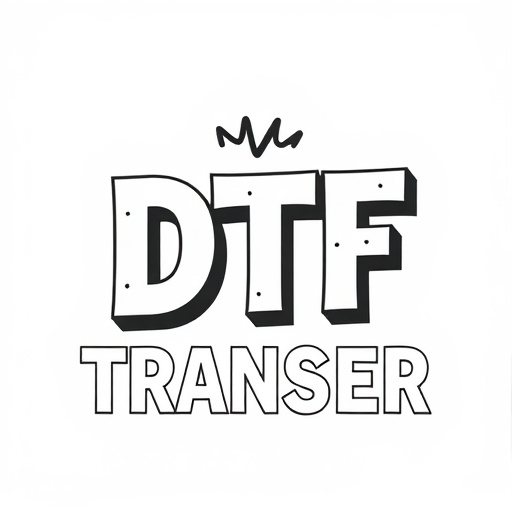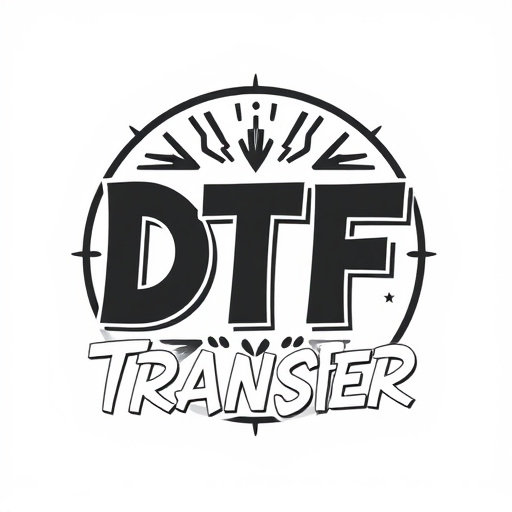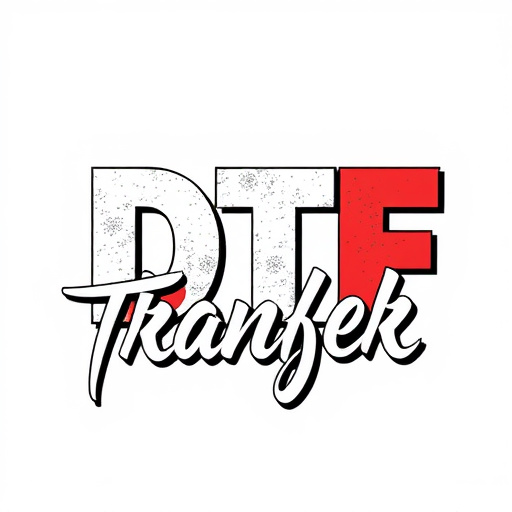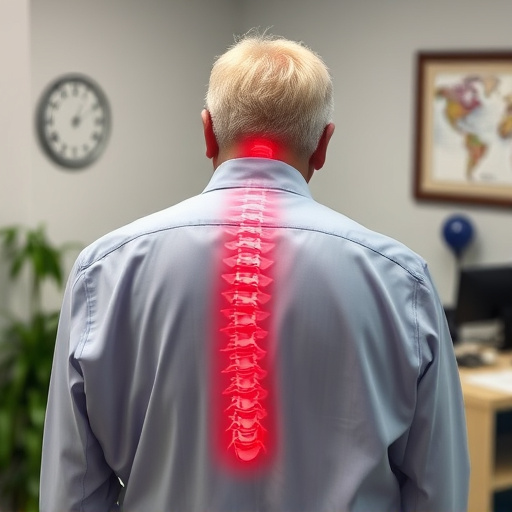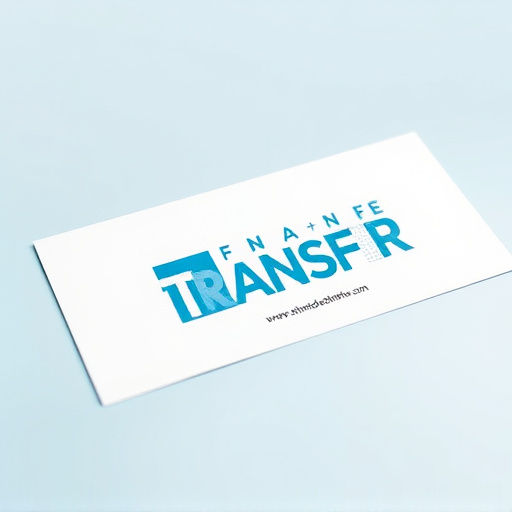Direct-to-Film (DTF) transfers are revolutionizing print production by creating high-quality prints directly on film. This innovative technique offers precise color reproduction and crisp details for professional applications like large-format printing and signage. DTF printing involves applying ink to a light-sensitive film, streamlining the process and eliminating intermediate steps for consistent color and detail. With quick turnaround times and versatility, DTF is ideal for graphic design, sign-making, and fine art reproduction. Selecting the right equipment, materials, and meticulous testing procedures ensure accurate quality assessment. Key factors to evaluate include visual clarity, uniform exposure, and physical attributes like texture and emulsion quality. Best practices include using high-quality film stock, regular equipment calibration, clean environment, and proper lighting to maintain superior DTF prints.
In the realm of film preservation and restoration, Direct-to-Film (DTF) transfers have emerged as a game-changer. This cutting-edge technology allows for precise digital replication directly from film negatives to print media, offering unparalleled quality assessment tools. The article delves into the intricacies of DTF transfers, exploring their benefits, the process involved, and critical factors for evaluating DTF prints. By understanding these aspects, folks can ensure the preservation of cinematic legacy and enhance visual storytelling.
- Understanding Direct-to-Film (DTF) Transfers: A Brief Overview
- Benefits of DTF Transfer for Quality Assessment
- The Process: From Film to Print
- Choosing the Right Equipment and Materials
- Evaluating DTF Prints: Criteria for Quality Check
- Best Practices and Common Pitfalls to Avoid
Understanding Direct-to-Film (DTF) Transfers: A Brief Overview

Direct-to-Film (DTF) Transfers represent a cutting-edge method in print production, offering an innovative approach to creating high-quality prints directly on film. This technique has gained significant traction in the industry due to its ability to streamline the printing process and enhance overall efficiency. By eliminating intermediate steps, DTF transfers ensure precise color reproduction and crisp details, making them ideal for professional applications such as large-format printing, signage, and display materials.
DTF Printing involves a specialized process where ink is directly applied to a light-sensitive film, which subsequently hardens upon exposure to light. This allows for the creation of intricate designs and detailed prints with exceptional clarity. The film, once processed, can be used for various purposes, including screen printing, UV printing, or as a master for replication. DTF Transfers have revolutionized the way we approach print quality assessment by providing a direct, precise means of evaluating color accuracy, resolution, and overall print integrity before final production.
Benefits of DTF Transfer for Quality Assessment

Direct-to-film (DTF) transfers offer several advantages for quality assessment in various industries. One of the key benefits is their ability to produce high-quality, accurate prints directly onto a range of media, from paper to vinyl and even fabric. This eliminates the need for intermediate steps like plate preparation or screening, which can introduce variations in color and detail. With DTF Printing, you get consistent, precise results that closely mimic the original art, making it ideal for detailed comparisons.
Additionally, DTF Transfers facilitate quick turnaround times, allowing for rapid quality checks and feedback loops. This is particularly valuable in dynamic environments where fast decision-making is crucial. The versatility of DTF also extends to its use in various applications, including graphic design, sign-making, and even fine art reproduction. By leveraging DTF Technology, businesses can streamline their quality assurance processes, ensuring that products meet high standards efficiently and cost-effectively.
The Process: From Film to Print

The process of converting film to print through direct-to-film (DTF) transfers involves several crucial steps designed to ensure optimal quality. It begins with the selection of appropriate film and paper, both of which play a vital role in determining the final product’s clarity and durability. Once chosen, the film is prepared for scanning, a meticulous process that captures every detail, from subtle textures to vibrant colors.
After scanning, the digital image undergoes sophisticated color correction and enhancement techniques. This ensures that when printed via DTF methods, the resulting prints accurately replicate the original film’s aesthetic. The treated digital file is then ready for transfer, where specialized printers lay down ink directly onto chosen media, creating DTF prints that boast remarkable detail and vibrancy.
Choosing the Right Equipment and Materials
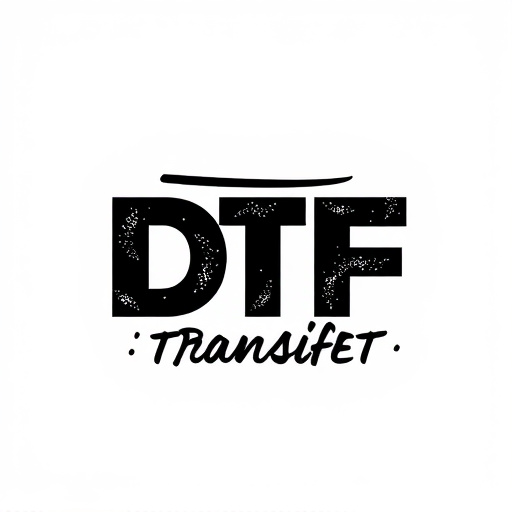
When conducting trial or test direct-to-film (DTF) transfers for quality assessment, selecting the right equipment and materials is paramount to achieving accurate results. The process involves a range of components that work in harmony to produce high-quality DTF prints. Key considerations include choosing the appropriate DTF printer capable of handling your desired resolution and print size. Additionally, top-tier printing plates and inks are essential for flawless transfers, ensuring vibrant colors and precise detail reproduction.
Proper preparation of the substrate is another critical aspect. The surface must be clean, smooth, and free from contaminants to allow for optimal adhesion of the DTF prints. Using high-quality substrates like synthetic papers or films recommended by the printer manufacturer enhances consistency in testing. Accurate measurement tools and a well-lit workspace further contribute to successful trials, enabling you to meticulously evaluate each DTF transfer’s quality against set benchmarks.
Evaluating DTF Prints: Criteria for Quality Check

When evaluating Direct-to-Film (DTF) prints for quality assessment, several key criteria must be considered to ensure optimal results. Visual inspection is paramount, focusing on clarity and detail reproduction. The image should exhibit sharp edges, vibrant colors, and minimal distortion, reflecting the original source material accurately. Additionally, uniform exposure and consistent contrast levels are essential, as variations can indicate processing issues or equipment malfunctions.
Physical characteristics like print texture and emulsion quality also play a role in DTF Transfer performance. A smooth, even surface with minimal imperfections enhances visual fidelity. Furthermore, checking for dust particles, scratches, or other physical contaminants on the print is crucial to maintaining high-quality standards. Ultimately, a comprehensive quality check involves scrutinizing both the aesthetic and technical aspects of DTF Prints to guarantee their suitability for intended applications.
Best Practices and Common Pitfalls to Avoid

When conducting direct-to-film (DTF) transfers for quality assessment, adhering to best practices is paramount to ensure accurate and reliable results. Firstly, always use high-quality film stock suitable for DTF printing to minimize graininess and maximize detail retention. Calibrate your equipment regularly to maintain consistent exposure and development times. Additionally, maintain a clean and controlled environment to prevent dust and fingerprints on the film, which can negatively impact image quality. Proper lighting is crucial; use diffused or soft light sources to avoid harsh shadows that may distort details in the final print.
Avoiding common pitfalls is equally important. One major mistake to steer clear of is overexposure, which can burn critical highlights and yield a flat, unappealing image. Ensure your exposure settings are tailored for DTF printing, accounting for the film’s sensitivity and development process. Another pitfall involves neglecting post-processing steps like proper cleaning and drying of films after development. This can lead to sticky or brittle prints, compromising their structural integrity and visual quality. Remember, meticulous attention to detail throughout each step will help you achieve superior results with your DTF transfers.



